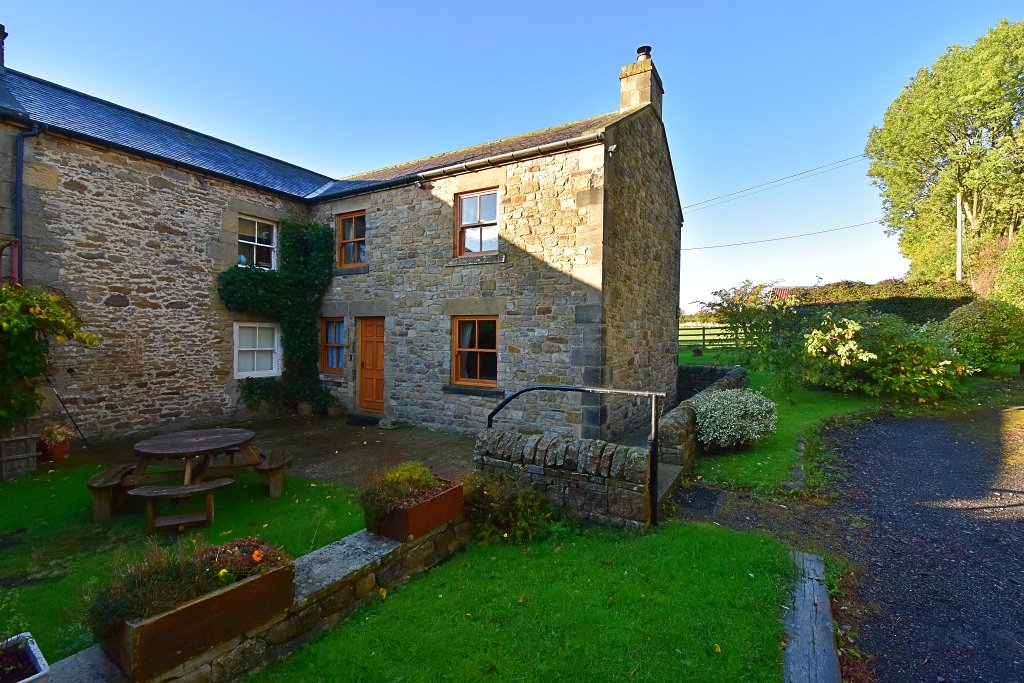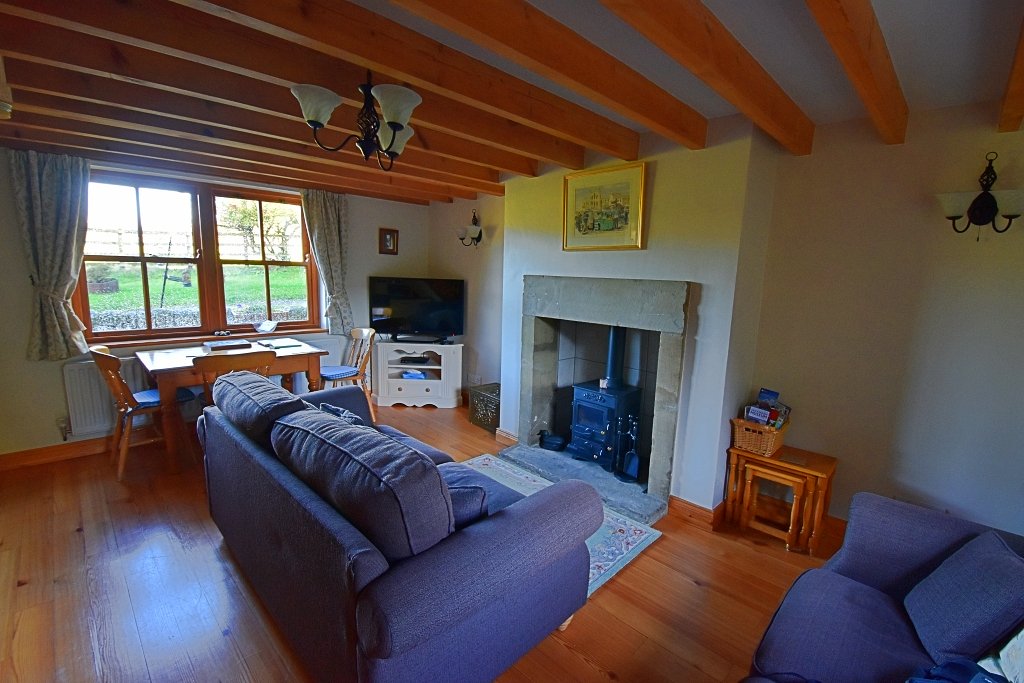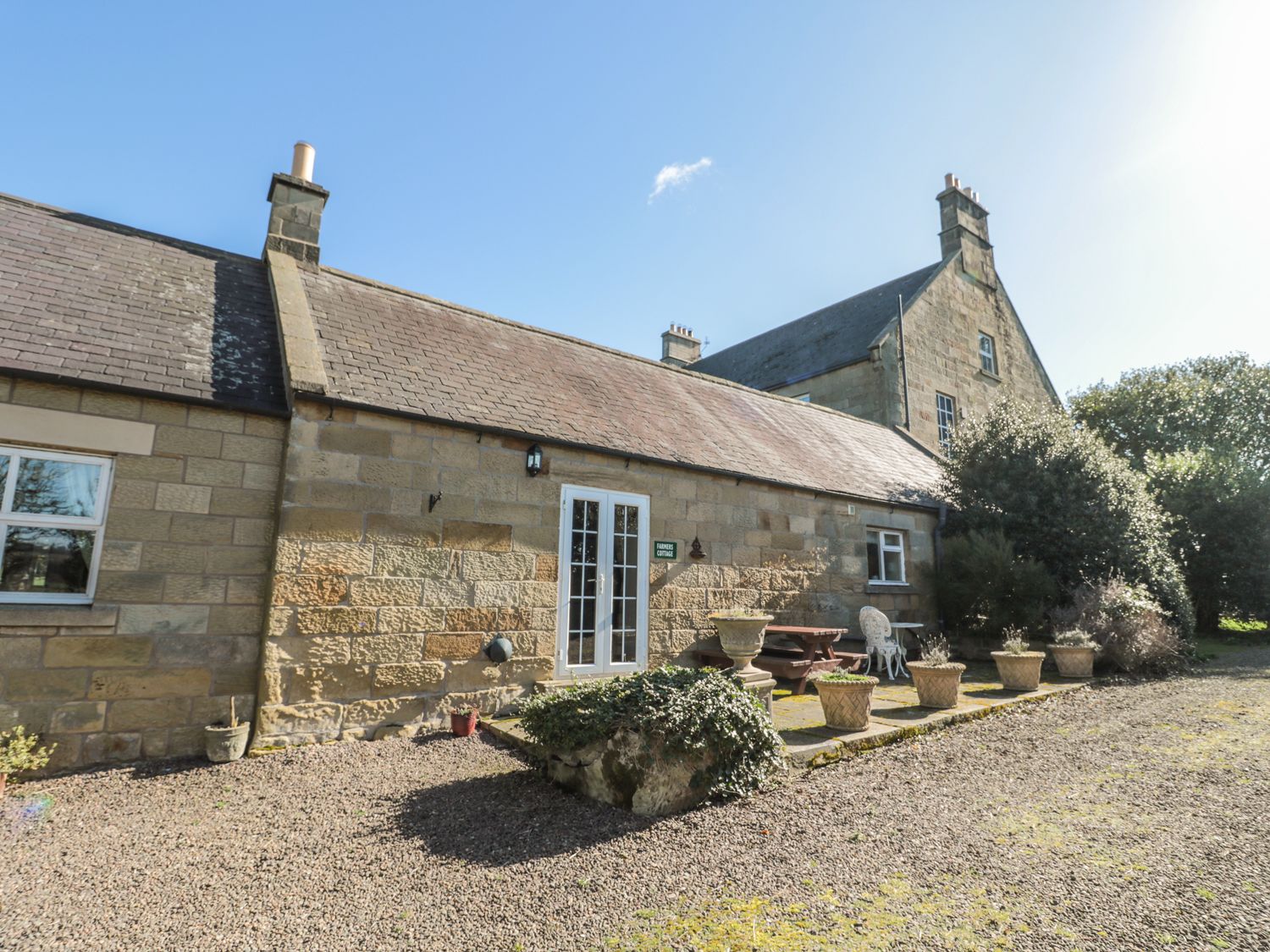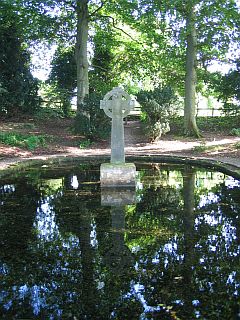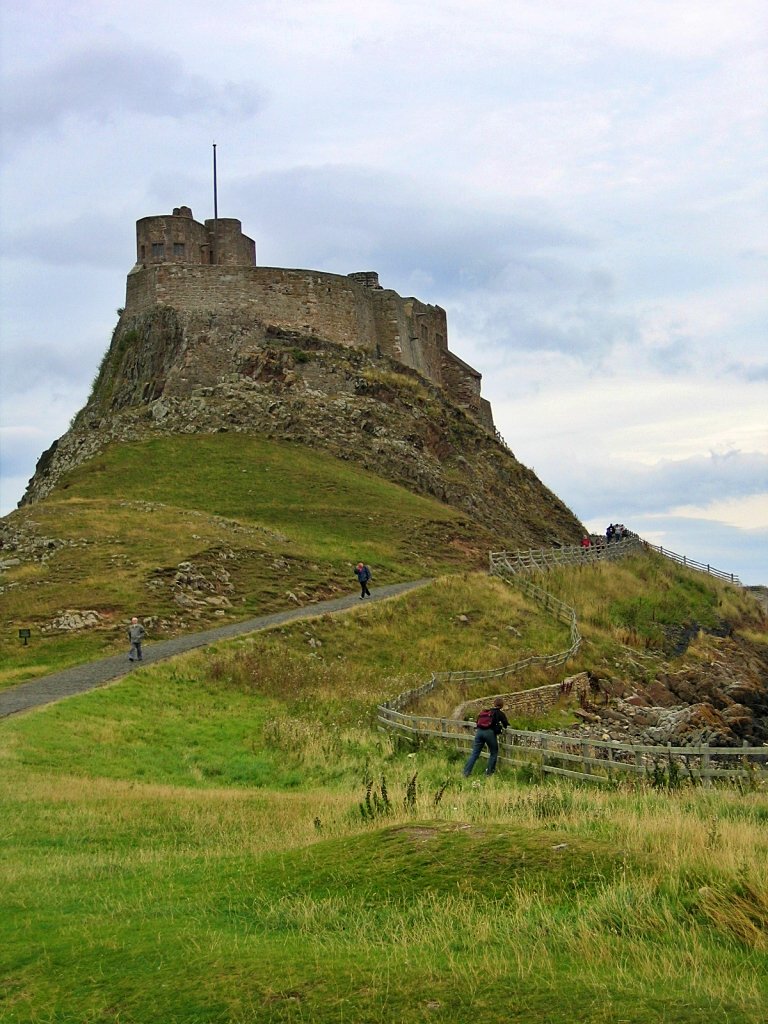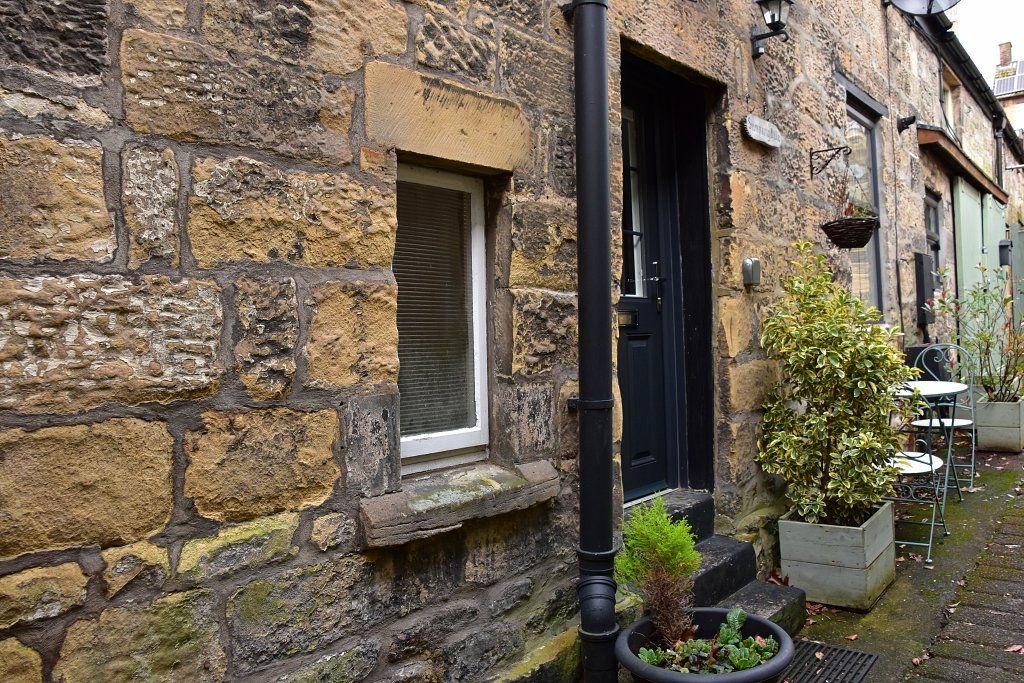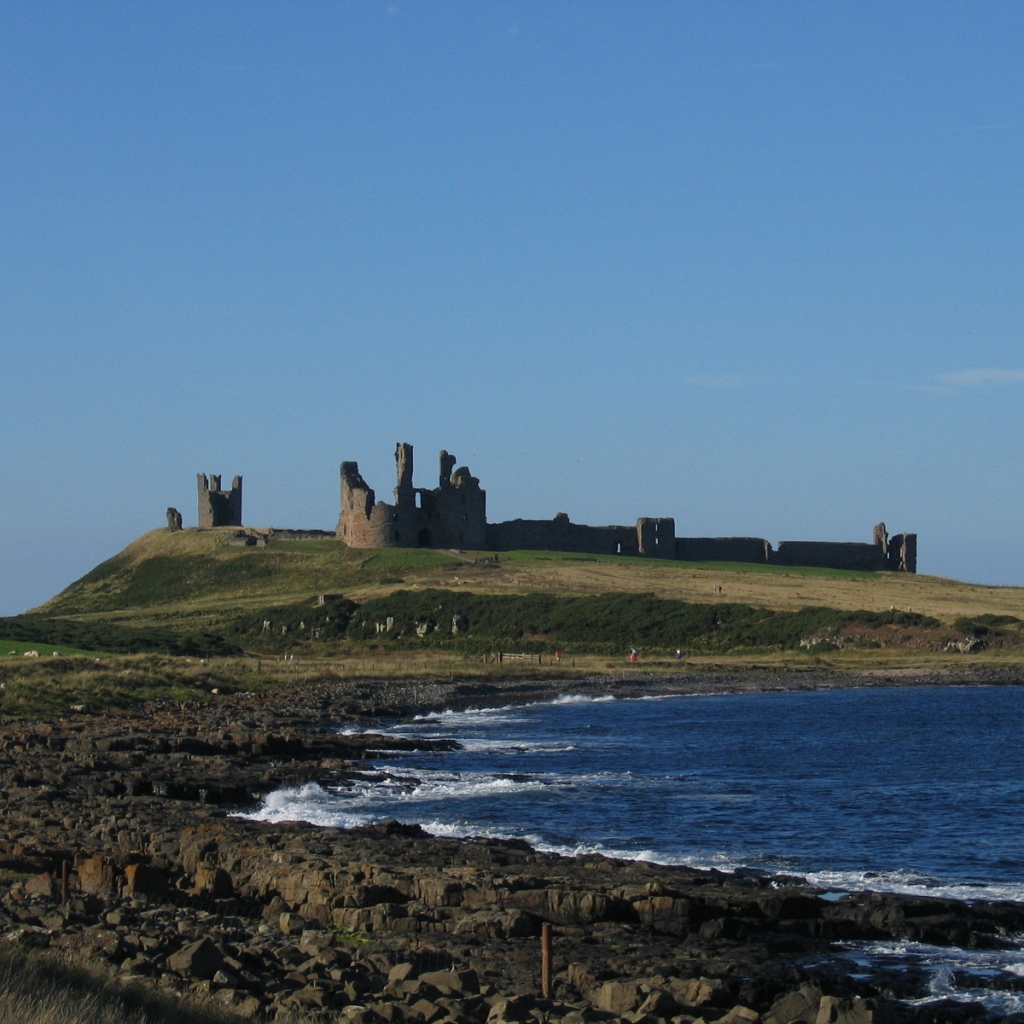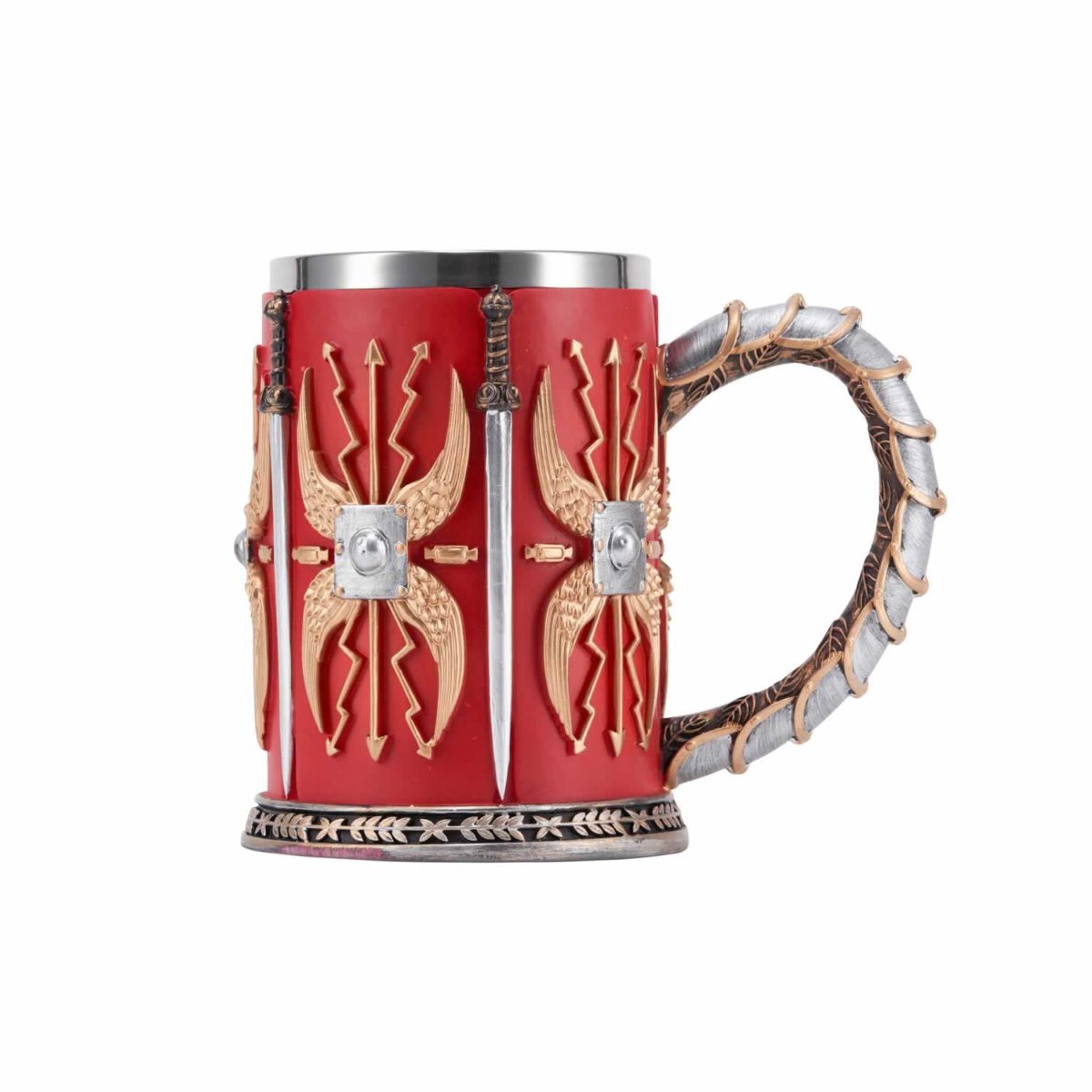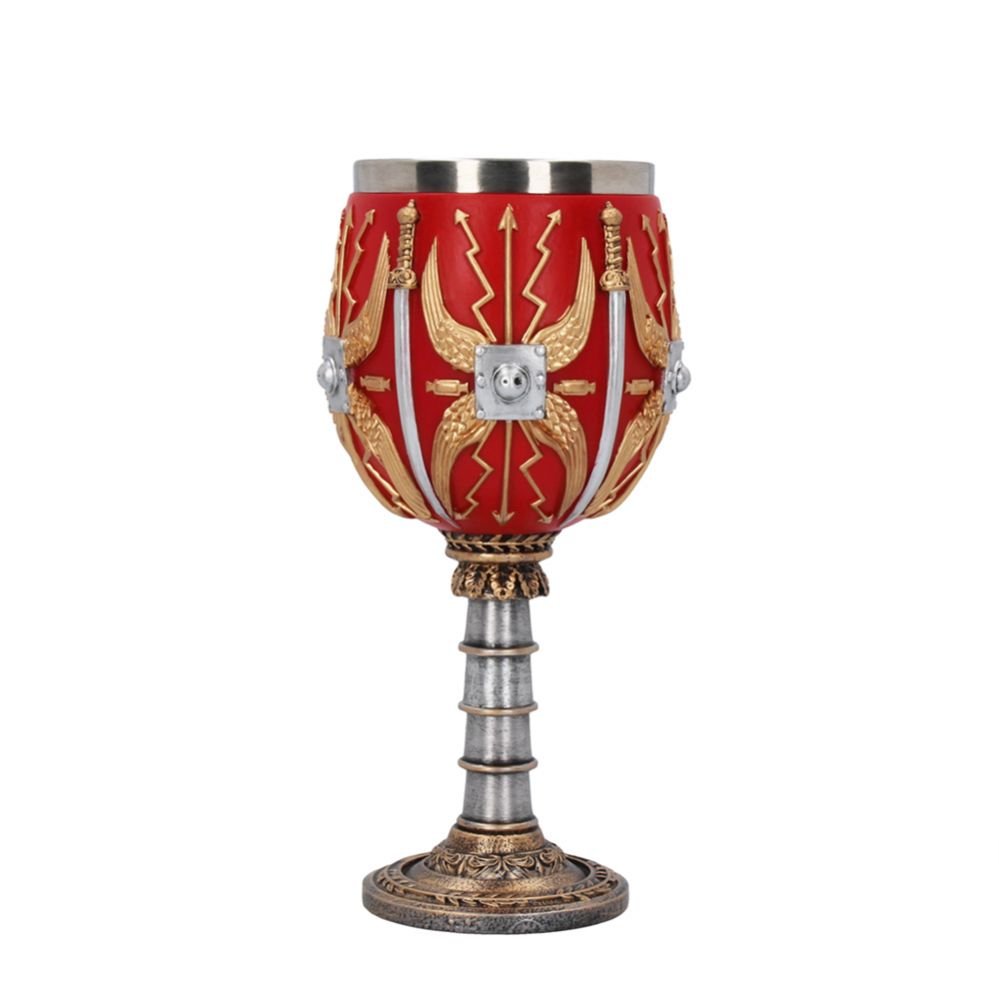Chesters Roman Bridge
Building a wall across northern England would challenge anyone. Yet the Romans did it in 122, overcoming every engineering challenge the location threw at them. One of those challenges was the North Tyne river, which rises near the Scottish border above Kielder Water. In the dryer months, the river flows gracefully through the beautiful Northumberland countryside, meeting the South Tyne river, and passing through Newcastle to the North Sea. After periods of wet weather, though, the river transforms into a raging torrent, making bridge building a challenge. This did not deter the Romans, and using their ingenuity they built not one, but two bridges across the river near Chollerford. On a fine October morning we set out to discover Chesters Roman Bridge.
After finding the ruins of another Roman bridge in Piercebridge during an earlier holiday, we were excited to encounter another. To find the Chesters Roman Bridge ruins we parked in a small lay-by on the B6320 road just after the roundabout in Chollerford. It was then a short walk over Chollerford Bridge to join a gated footpath on the right-hand side. There is an English Heritage information board next to the gate.
If walking from Chesters Roman Fort, then it’s about 1.1 miles (15 – 20 minutes). Leave the car park and turn right along the B6318 towards Chollerford. At the roundabout turn right to cross the bridge and join the footpath on the right-hand side.
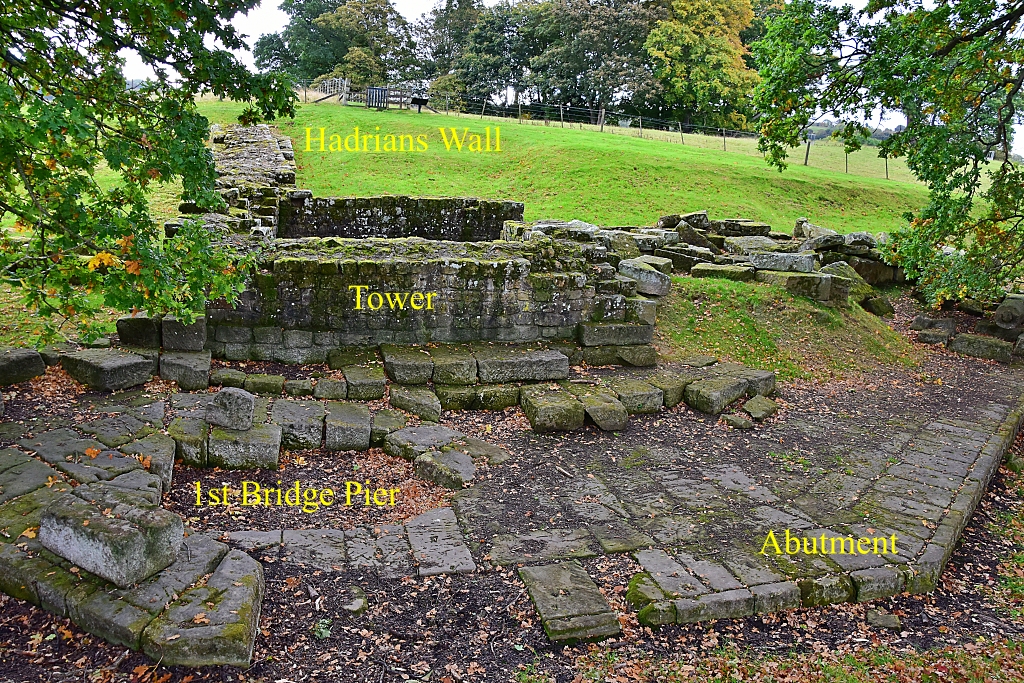 Chesters Roman Bridge Eastern Abutment and Tower Base with Hadrians Wall Disappearing in the Distance © essentially-england.com
Chesters Roman Bridge Eastern Abutment and Tower Base with Hadrians Wall Disappearing in the Distance © essentially-england.comMuch of what we can see of Chesters Roman Bridge is due to the movement of the North Tyne river over the last 1800 years. On the east side of the river the abutment, tower base, and Hadrians Wall are clearly visible as the river has moved away from them. Similar Roman structures have been excavated on the opposite bank in the Chesters Roman Fort site, but these have been reburied to protect them. Also, archaeologists have found evidence of the piers used to support the span of the two Roman bridges in the river.
The First Chesters Roman Bridge
The first bridge was built at the same time as Hadrian’s Wall and carried the wall across the North Tyne. The outline of the most easterly pier of the bridge can be seen within the visible abutment. It is in line with Hadrian’s Wall and hexagonal in shape. The width of the pier indicates that they would have supported a structure about 3 metres wide, which was the width of Hadrian’s Wall at this point.
Examination has found that the pier was made up of large stones strapped together with iron clamps and set in lead. The span between the first two piers was found to be about four metres, suggesting that the bridge would have had nine arches. Historians believe that this bridge would have taken more time to complete than all other fixtures along the wall!
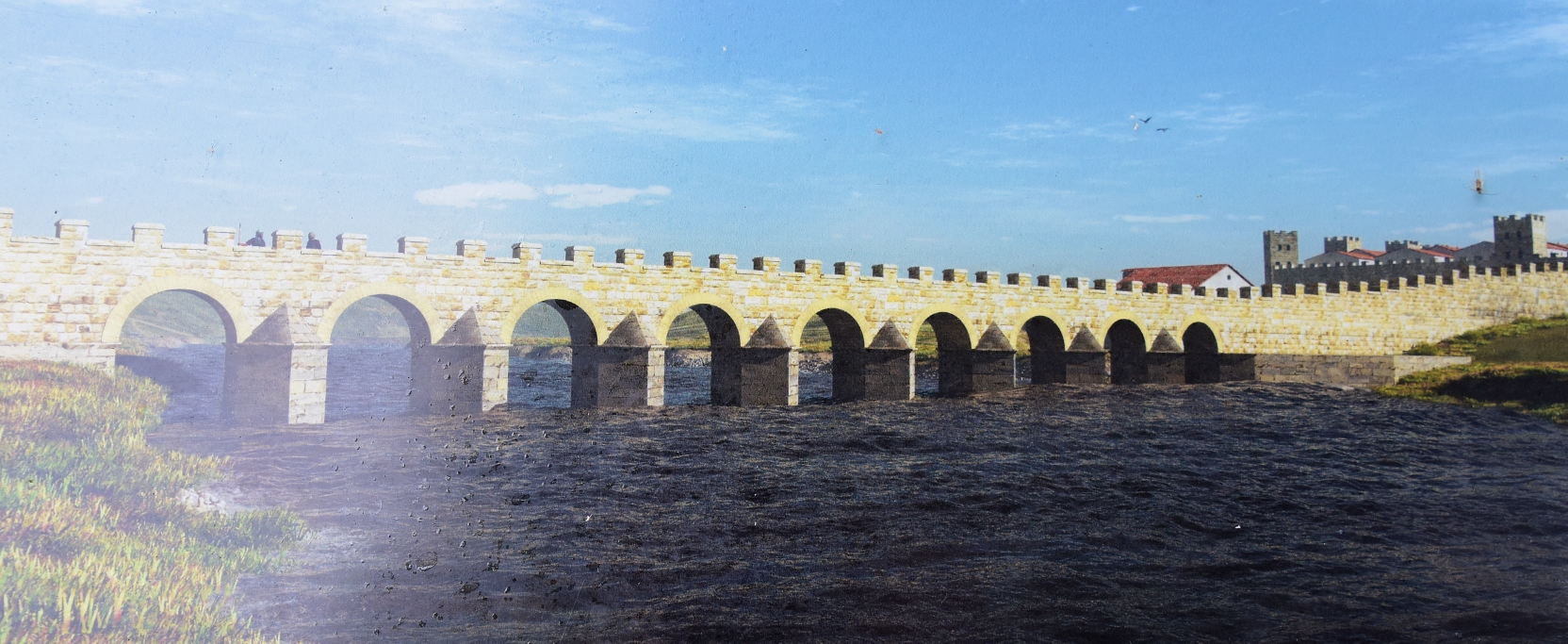 Artists Impression of the First Roman Bridge (Photo taken from English Heritage information board) © essentially-england.com
Artists Impression of the First Roman Bridge (Photo taken from English Heritage information board) © essentially-england.com
The Second Chesters Roman Bridge
Between the years 140 to 160 the Roman Army left Hadrian’s Wall to strengthen the Roman presence along the Antonine Wall in Scotland. Upon their retreat from Scotland and back behind Hadrian’s Wall, it’s unclear what state the first Chesters Roman bridge was in. It may have collapsed, or the Romans may just have decided to construct a larger bridge because they wanted a more direct military road crossing to Chesters Roman Fort.
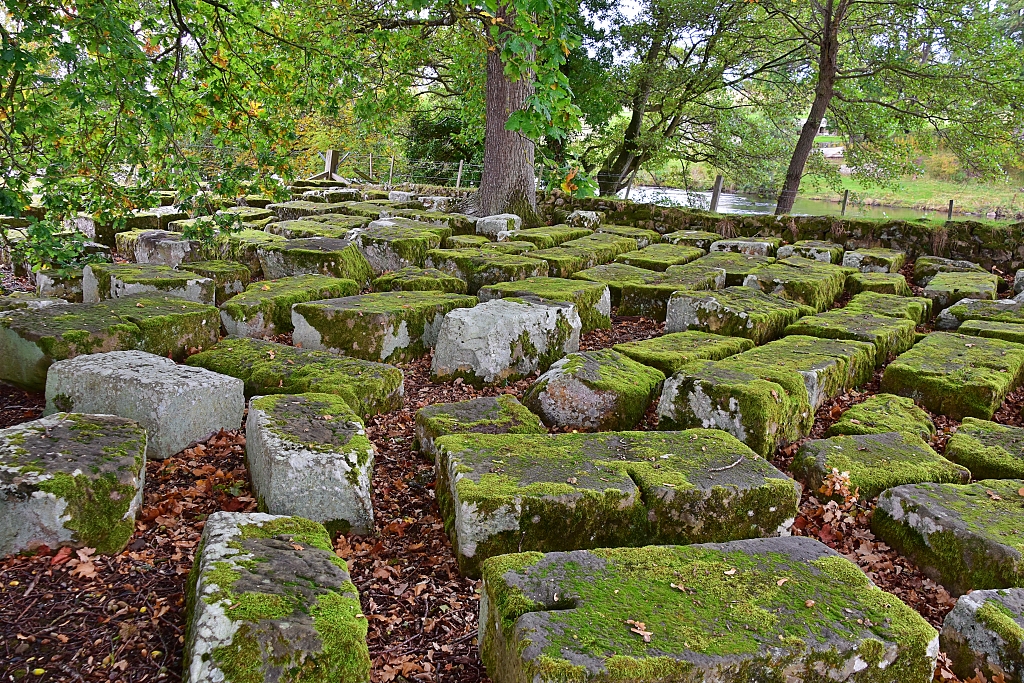 The Stone Park © essentially-england.com
The Stone Park © essentially-england.comThe second bridge across the North Tyne was built in the 160s and was much larger and more elaborate than the one it replaced. The submerged remains of three bridge piers have been found and their size suggests the width of the roadway was around six metres.
This new bridge was constructed to be up there with the best bridges in the Roman Empire and demonstrate the empire's power and wealth. It was highly decorated with columns and statues, the only signs of its military function were two guard towers, one at either end of the bridge.
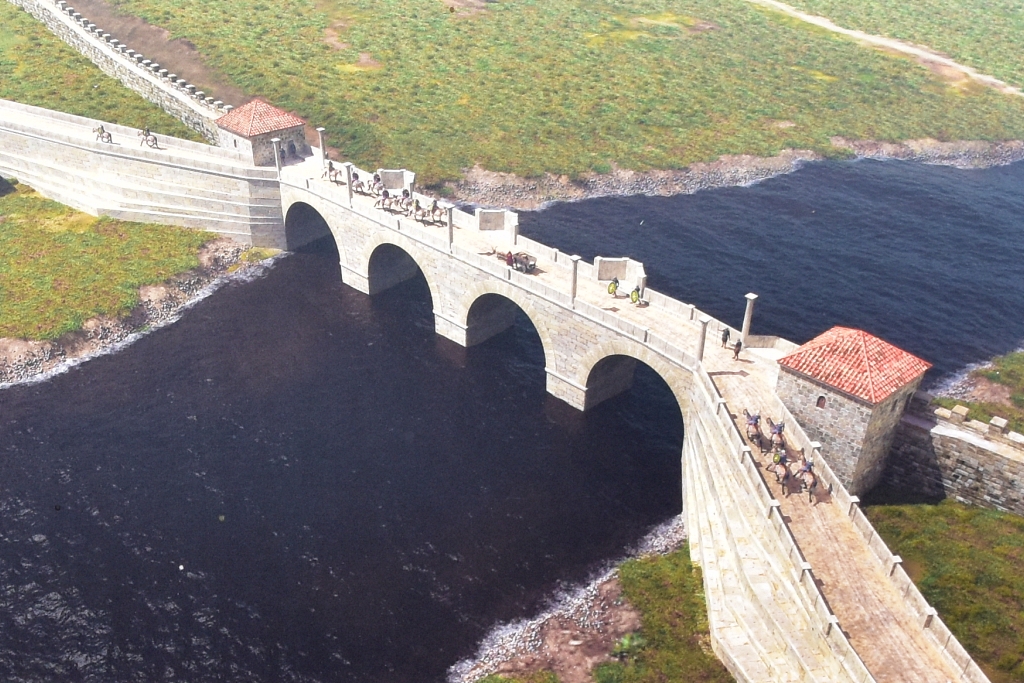 Artists Impression of the Second Roman Bridge (Photo taken from English Heritage information board) © essentially-england.com
Artists Impression of the Second Roman Bridge (Photo taken from English Heritage information board) © essentially-england.comInspection of the abutment ruins show that it was modified during the Roman period. The shape of the stones facing the flow of the water was changed to reduce the stress and wear of the stonework. A water channel was added, possibly for a watermill, and there are indications that cranes were used to lift the heavy stones.
To the side
of the abutment there is a stone park which contains many of the stones used
from a 1982/3 study of the second bridge. There are many decorative and well-worn
stones on display. Also, laying on the abutment is a stone column from the bridge.
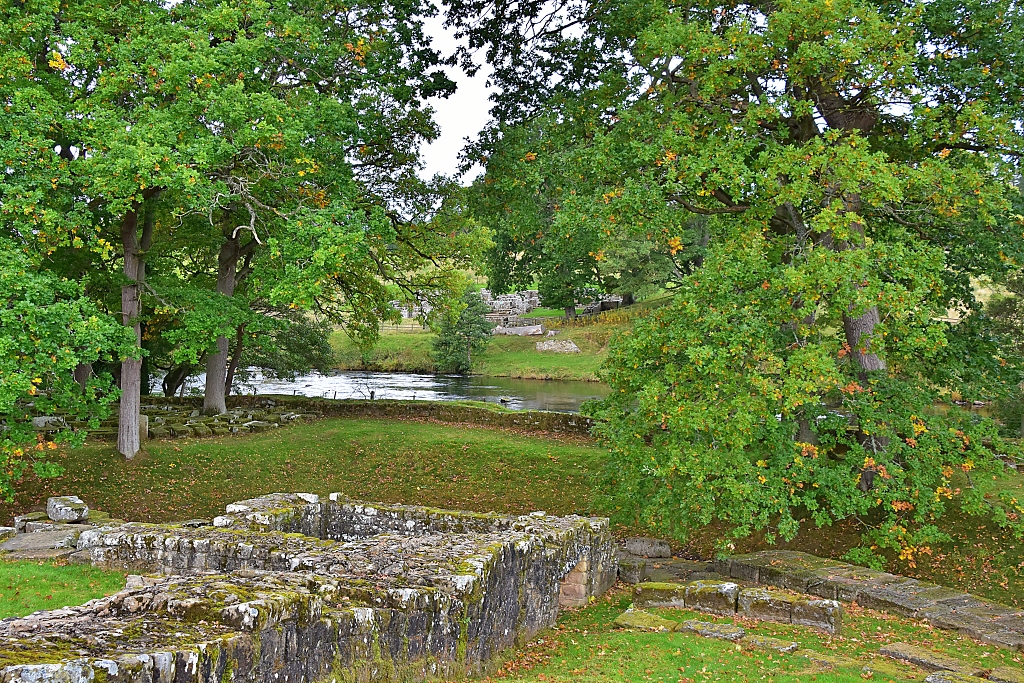 View Across North Tyne River to Chesters Roman Fort © essentially-england.com
View Across North Tyne River to Chesters Roman Fort © essentially-england.comArchaeological finds from around the bridge abutments show the bridge was in use until the Romans left England in 410. However, did the Romans leave the bridge intact when they left?
It is known that in the year 670 the bridge was taken down to use as building stone for the church in Hexham. Also, the tons of lead used between the stones would have been recycled. Did the Anglo-Saxon people just let such an extravagant, but very useful bridge fall into disrepair? Surely, they wouldn’t have dismantled a good bridge, or perhaps the bridge collapsed during flooding. Questions, questions, questions!
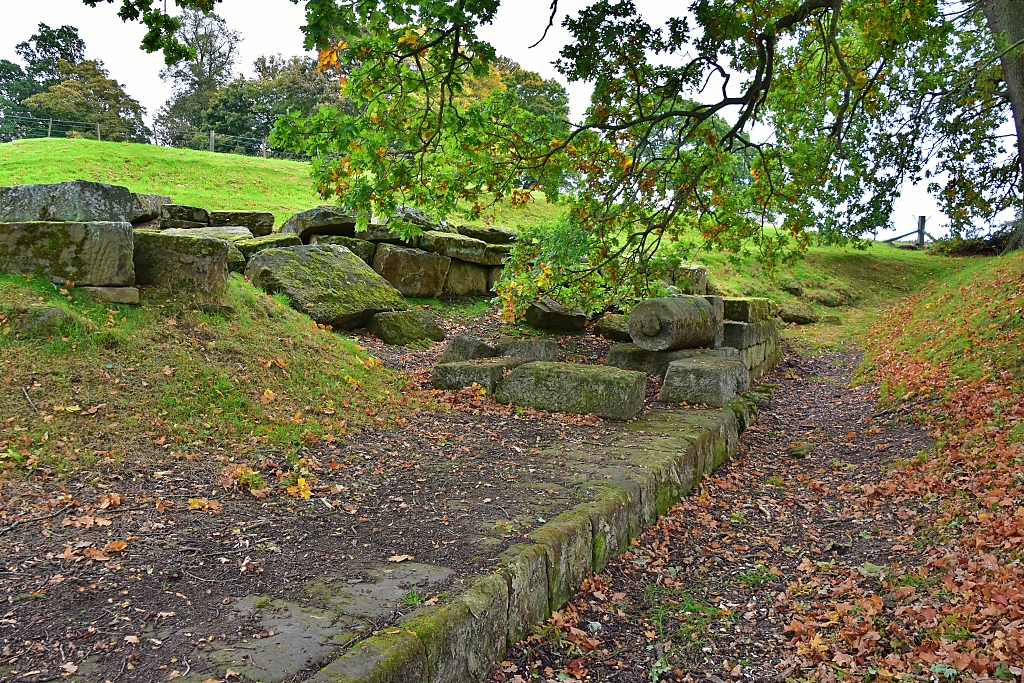 The East Abutment of Chesters Roman Bridge © essentially-england.com
The East Abutment of Chesters Roman Bridge © essentially-england.comThe best time of year to visit Chesters Roman Bridge will be after a long period of dry weather as there may be the chance of seeing some of the submerged structures due to low water levels. Conversely, the worst time to go will be after a prolonged wet period as the site may well flood. Also, the footpath from Chollerford Bridge may get muddy when wet.
For more information about opening times and events please visit the English Heritage website.
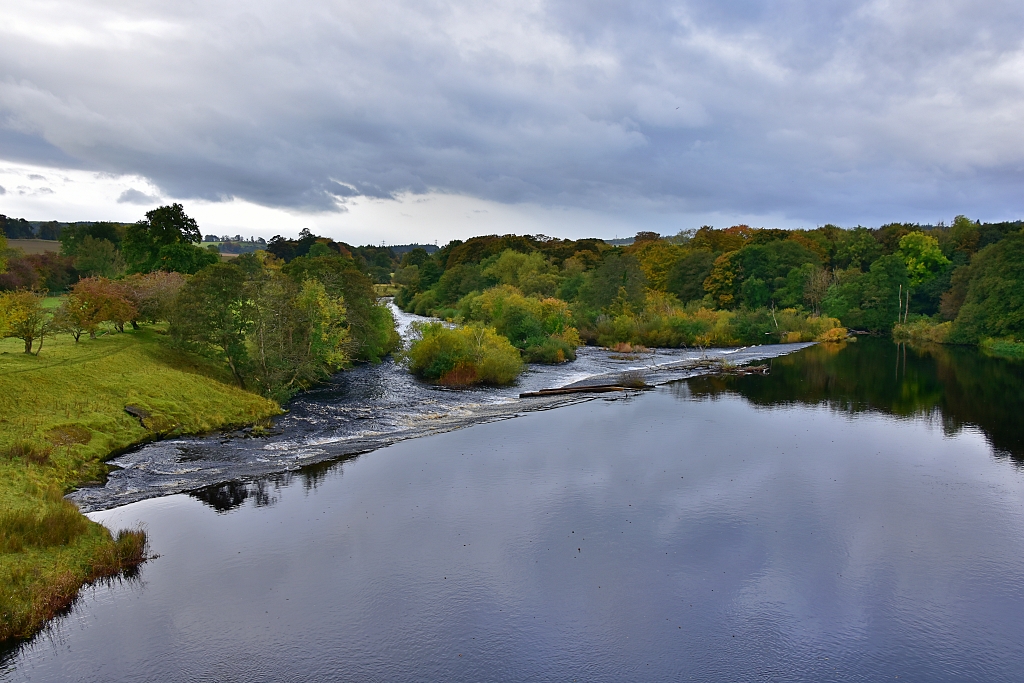 View of the North Tyne River from Chollerford Bridge © essentially-england.com
View of the North Tyne River from Chollerford Bridge © essentially-england.comWhere we Stayed:- Moorgair Cottage near Slaley
We stayed in Moorgair Cottage near Slaley which was very convenient for visiting Hadrian's Wall and its many Roman sites as well as Hexham, Corbridge, and Heavensfield. From the visitors book we also understand there are terrific walks out to Blanchland and back. It was a beautiful cosy cottage, and we would highly recommend to anyone staying in the area.
Are You Planning to Visit Northumberland?
Where You Could Stay
There's a reason Northumberland is one of my favourite English counties. Its landscape is utterly gorgeous with long beaches and empty sweeps of hills that just beg to be walked. In between you can find small towns and pretty villages, conntected by lanes that are great on the bike as long as you have the legs for climbing. And there are holiday cottages to suit all tastes and budgets.
To see other holiday cottages in Northumberland click here. Or check out holiday cottages in other parts of England by clicking here.
Or you could try a family orientated Parkdean Resort in Northumberland.
If you need to find a hotel, then try one of these search platforms...
What You Could See and Do
Even if you stayed a month, you'd find that you don't have enough time to explore the county top to bottom and see everything it has to offer. There's plenty of history from Hadrian's Wall to Lindisfarne in the north with reams of castles and ruins in between. There are beaches and seaside towns like Craster, Alnmouth and Seahouses - and some of the best fish & chips in all of England. There are market towns like Haltwhistle, Rothbury, Bellingham, Berwick, Warkworth and Harbottle to explore. And there are hillsides to climb and the great outdoors to enjoy.
Are you feeling in need of a holiday yet? Here are a few more pages that might give you ideas...
- Berwick-upon-Tweed
- Alnwick Castle
- The Holy Island of Lindisfarne
- Warkworth Castle
- Dunstanburgh Castle
- Cycling in Northumberland - my favourite tandem tour EVER!
- Visit the beach at Alnmouth.
- Stroll around Alnwick town.
And if you want to explore more of Northumberland and its martial history, check out this Northumberland Castle Tour.
For more Northumberland sites return from our Chesters Roman Bridge page to the Northumberland page.
